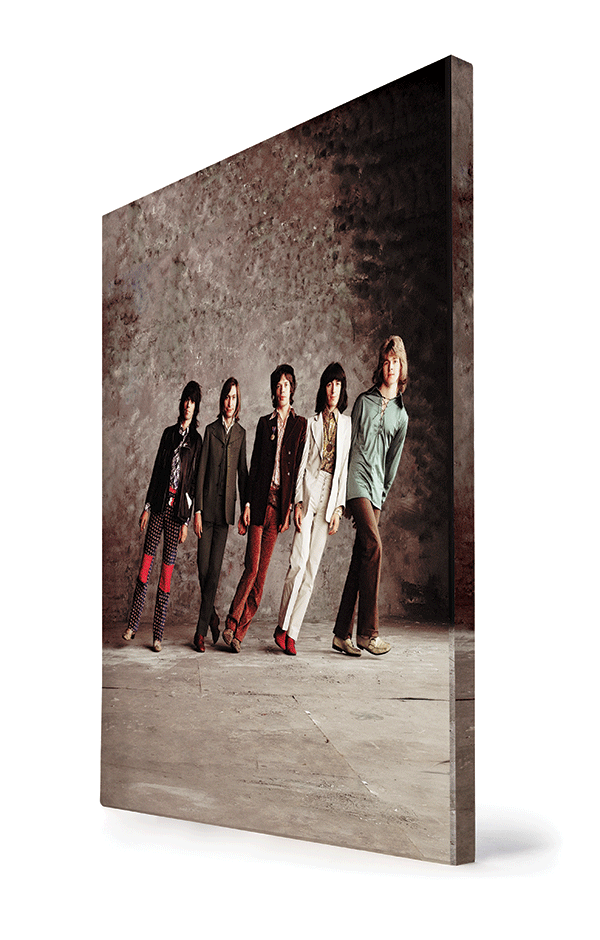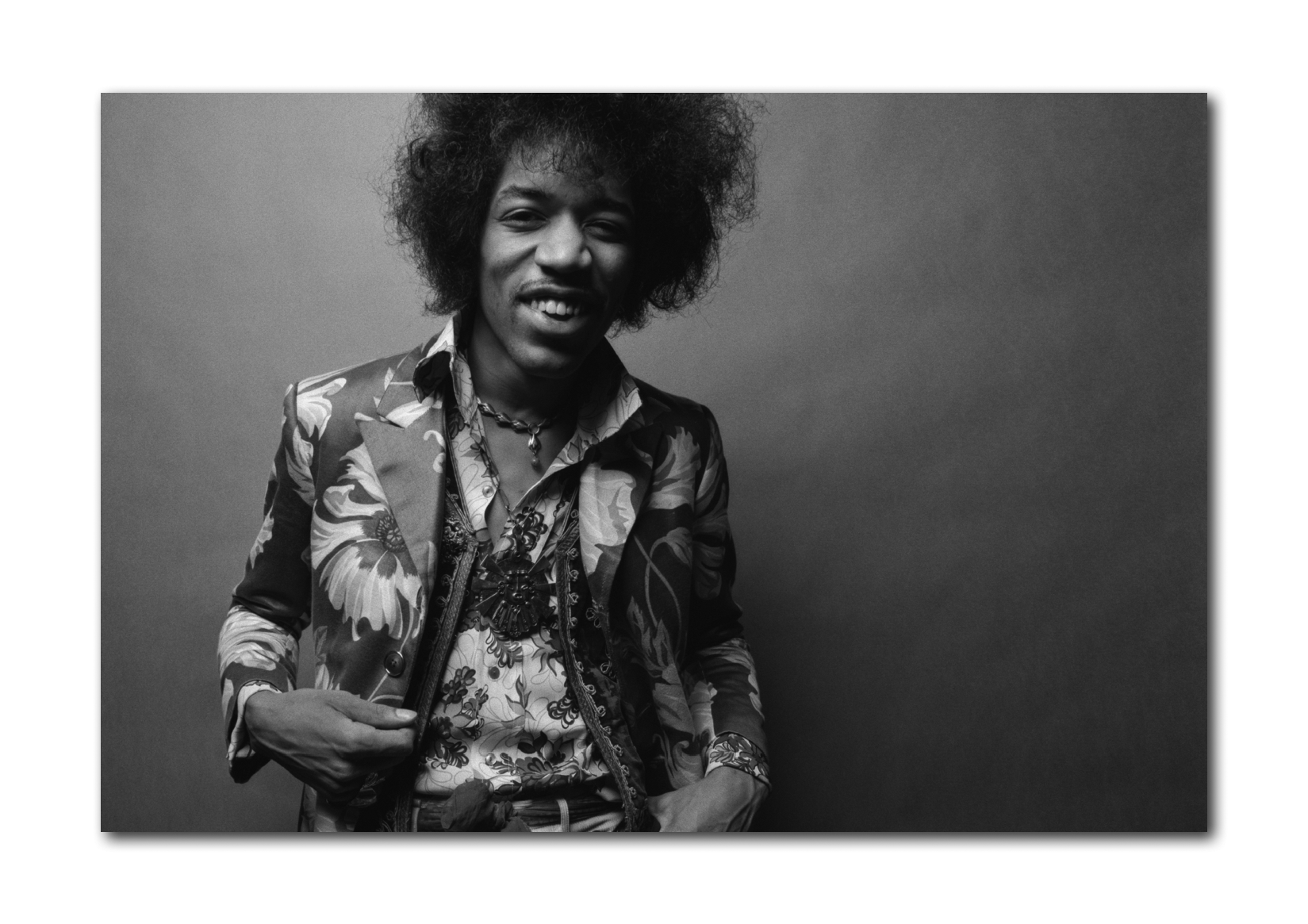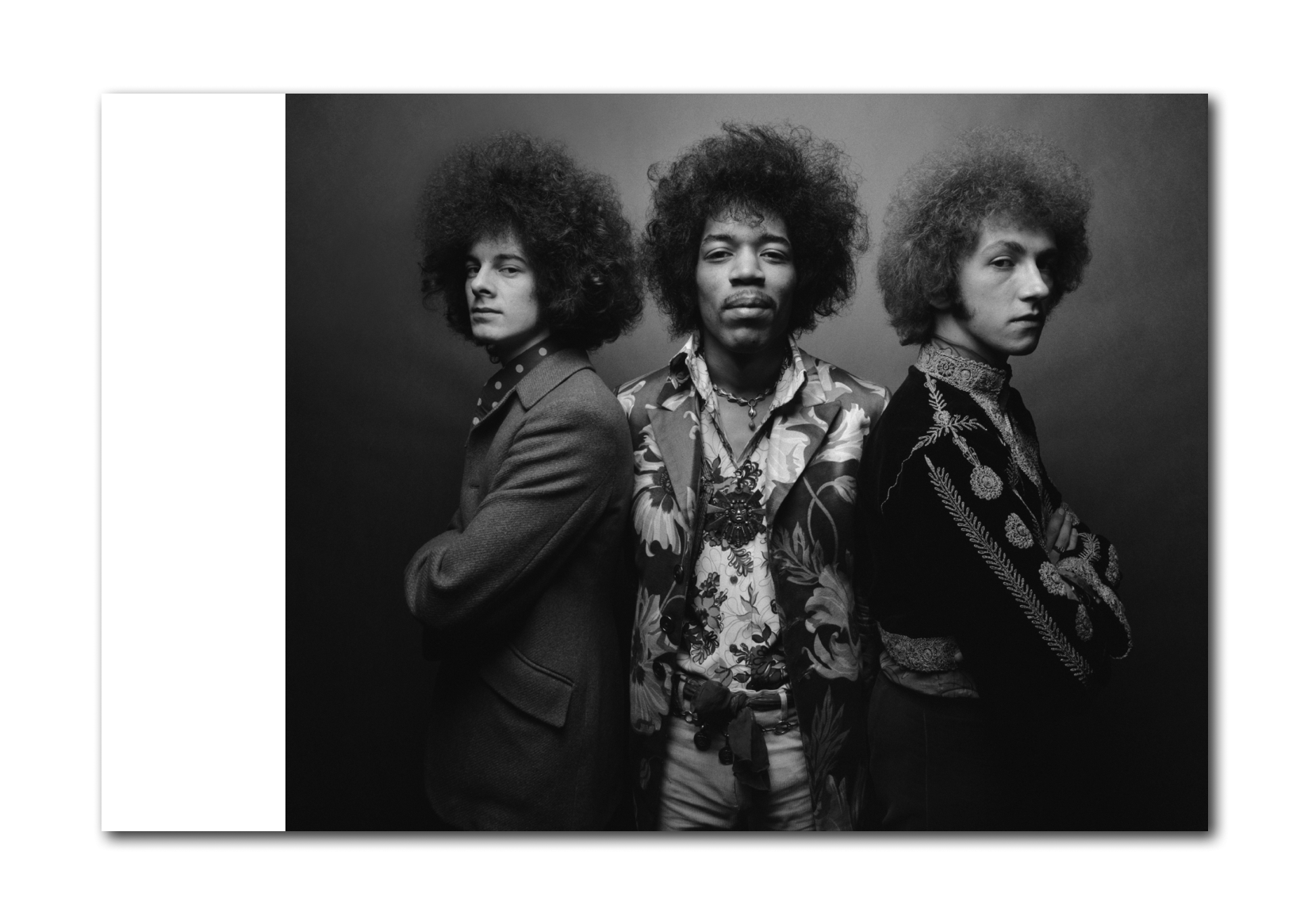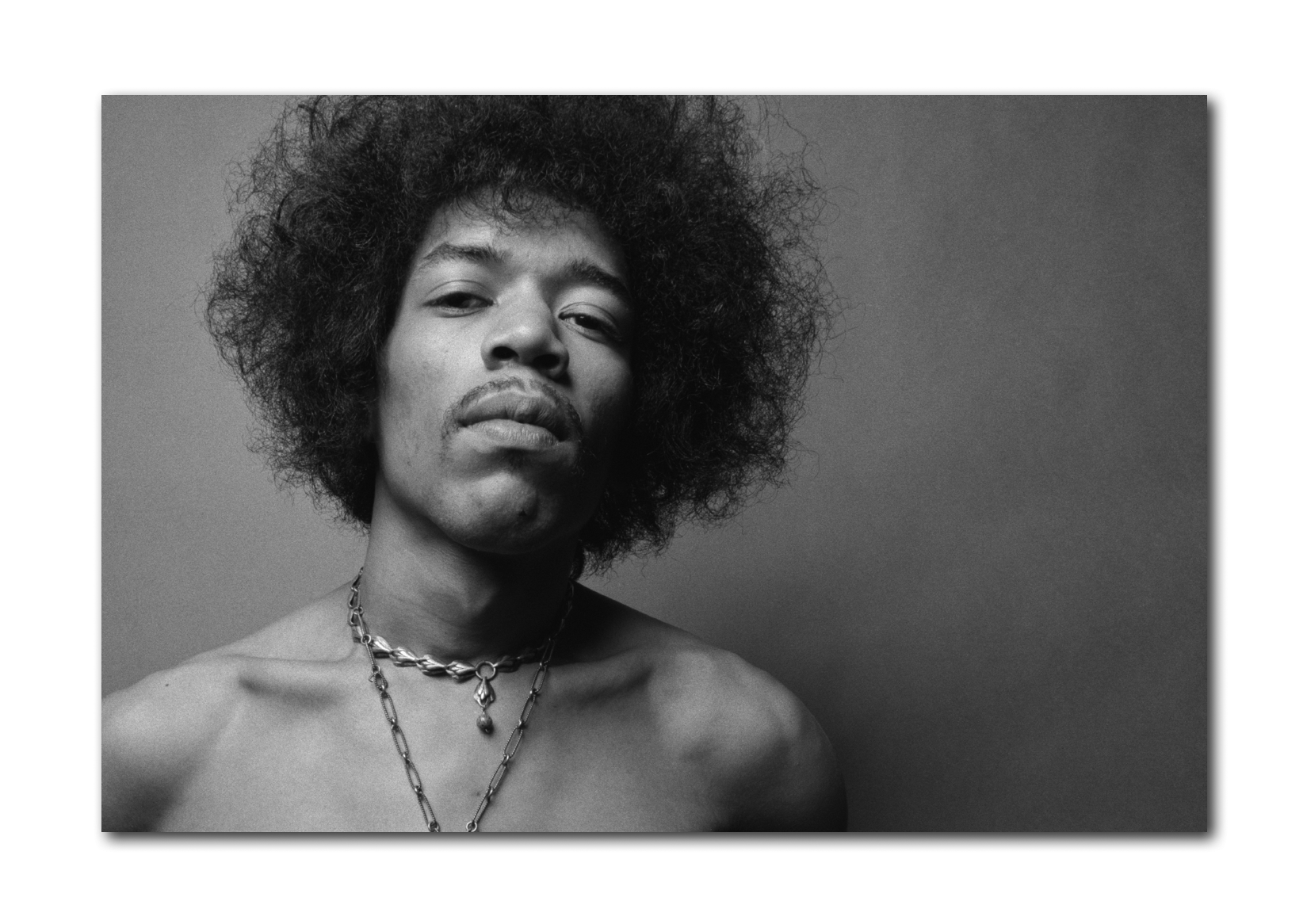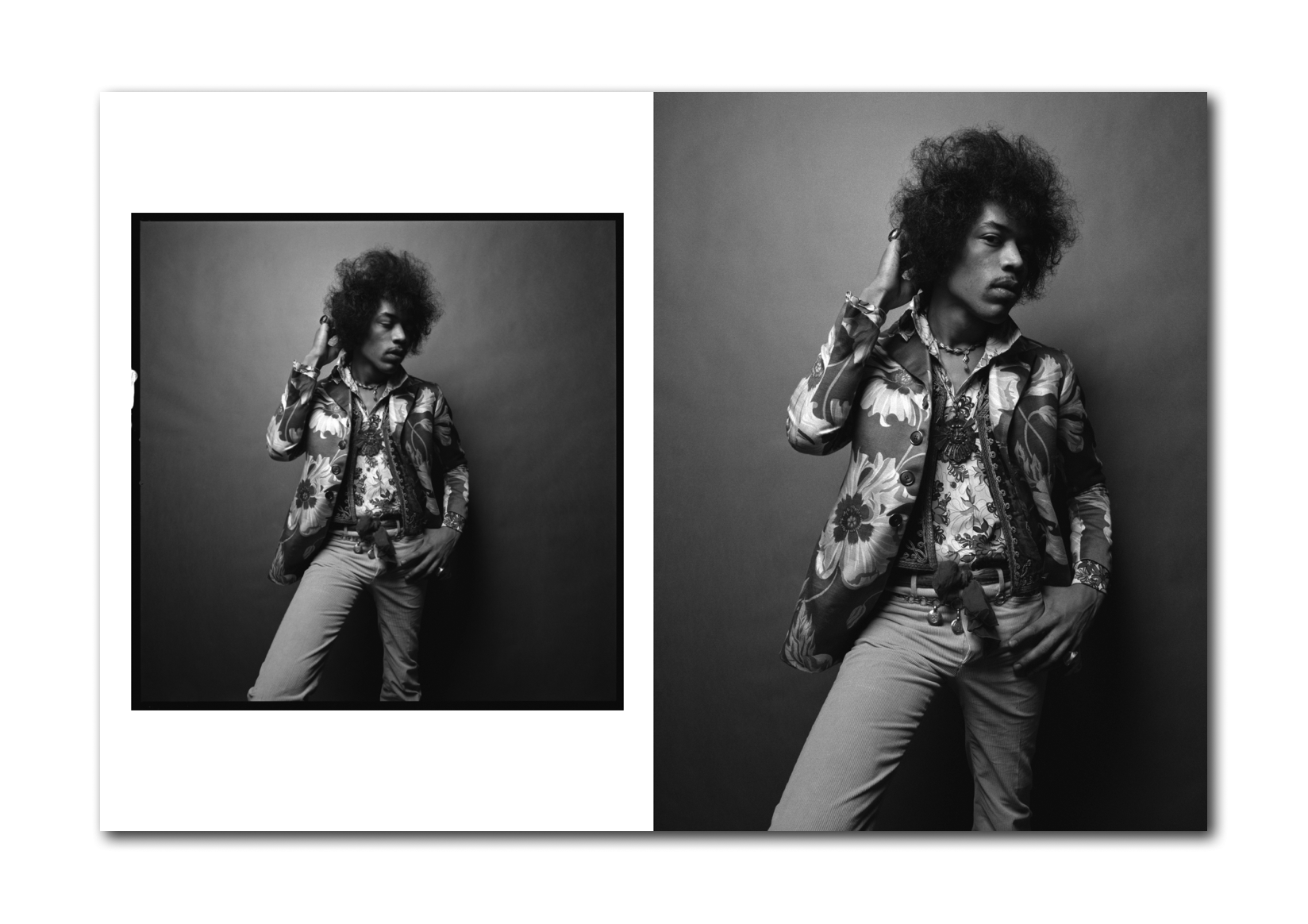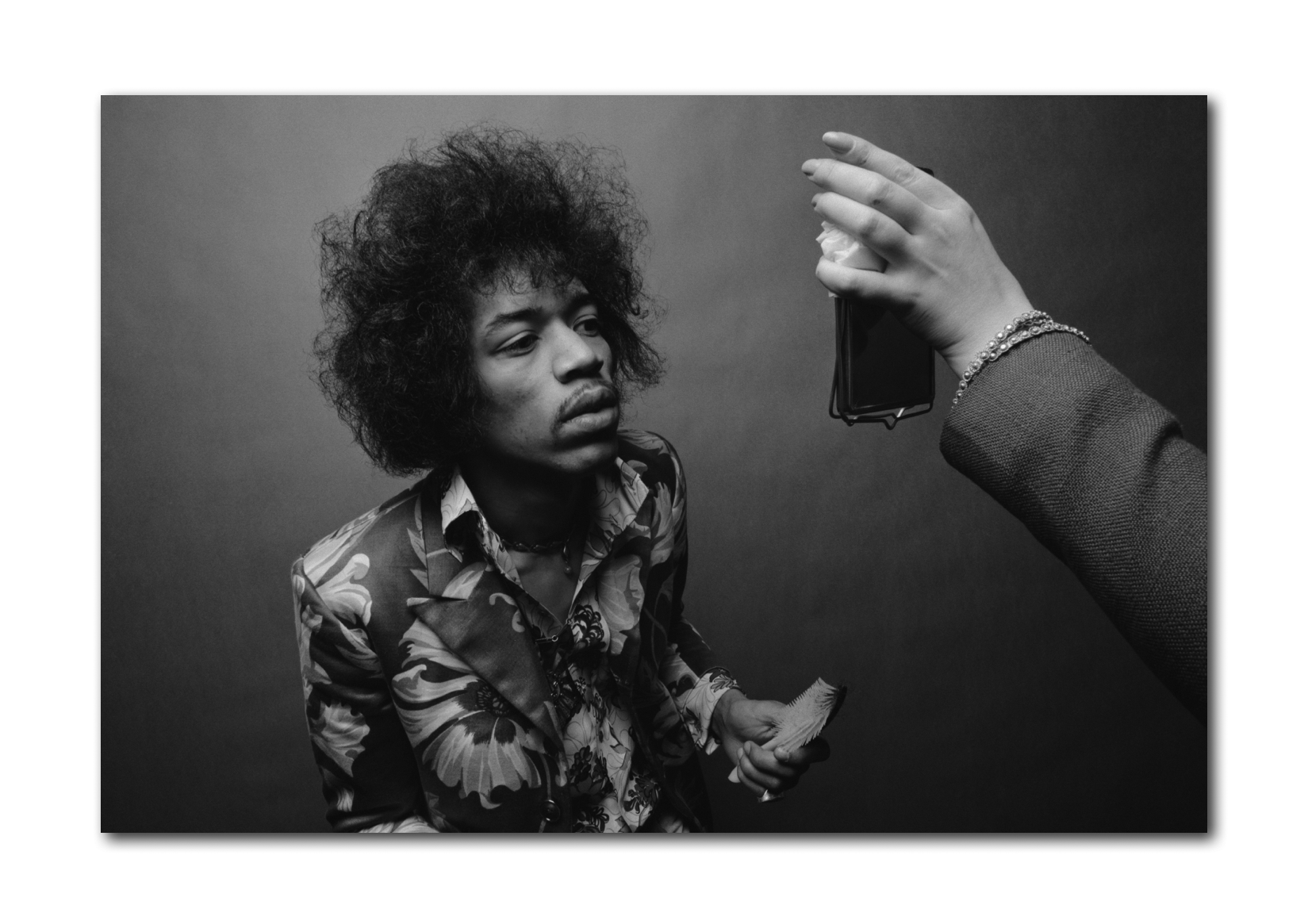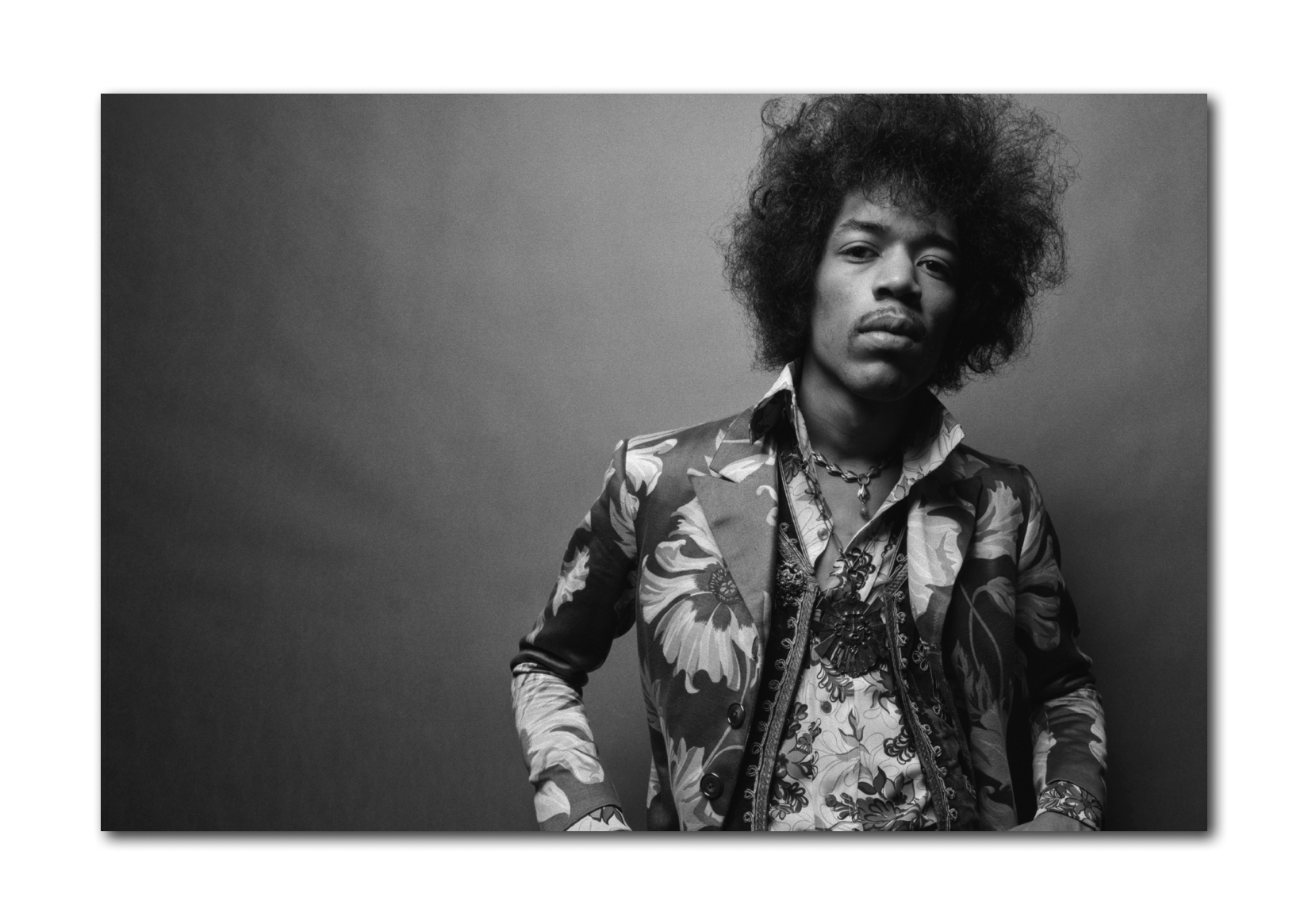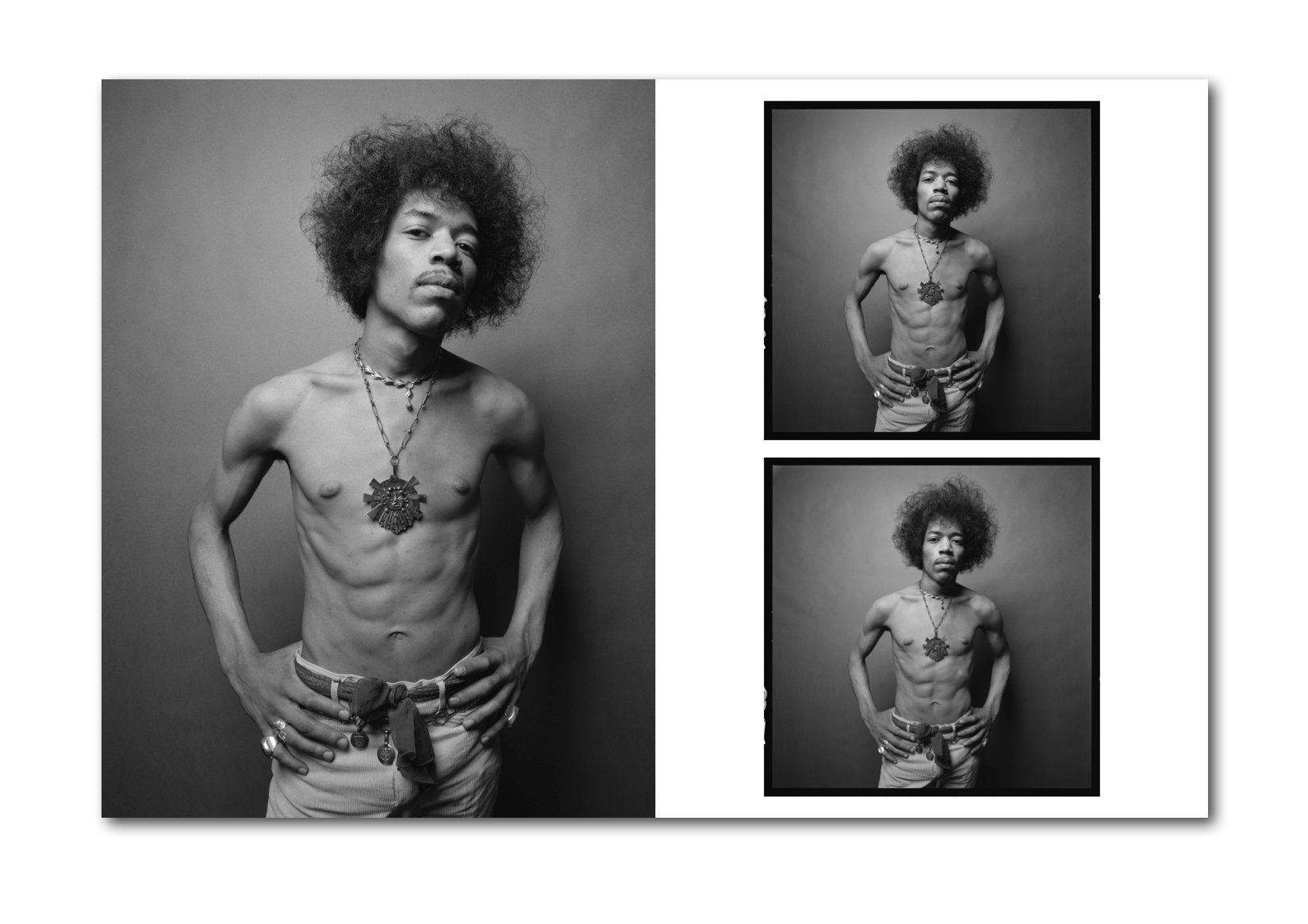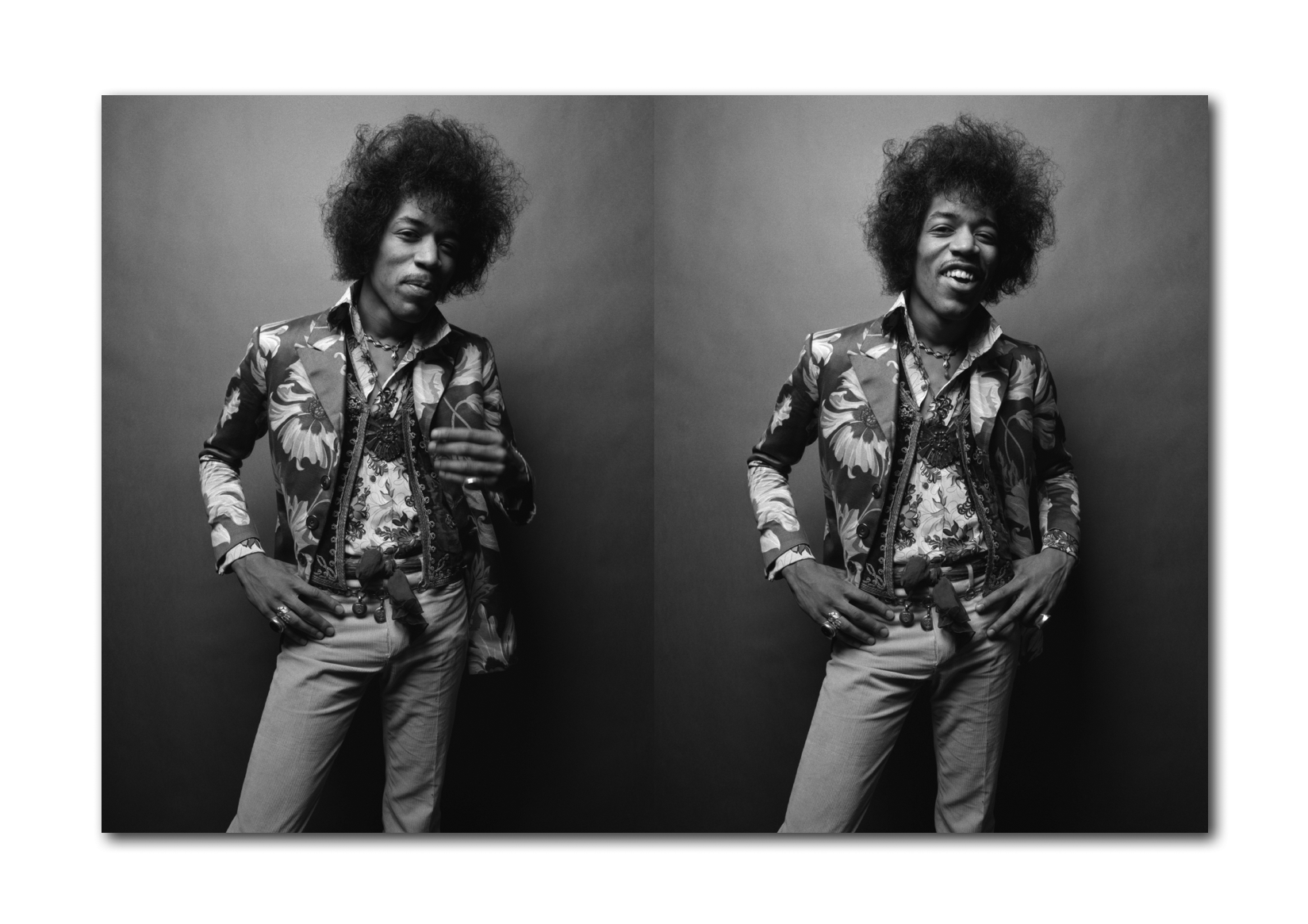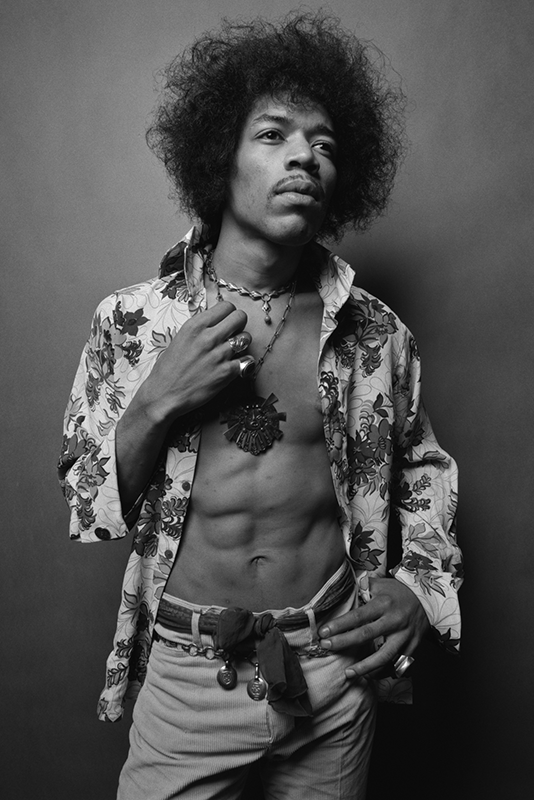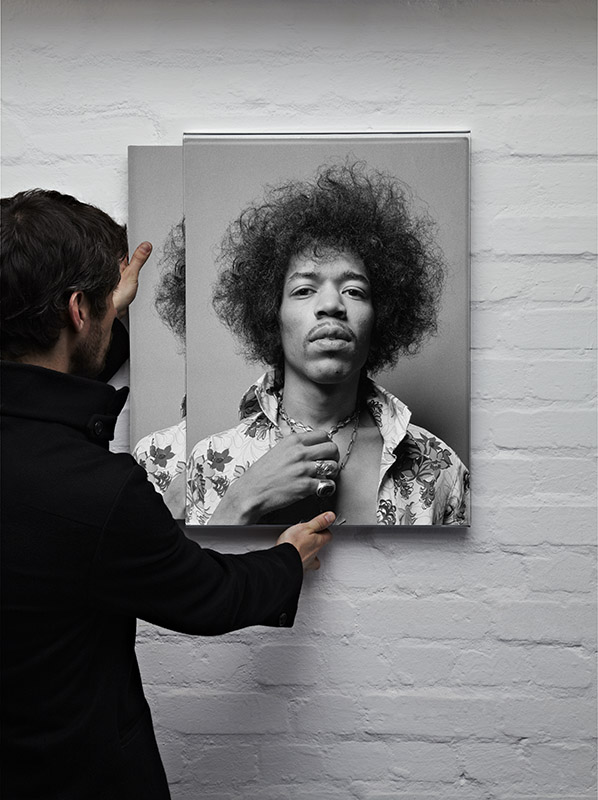Sticky Fingers: The Lost Session the limited edition book from Ormond Yard Press.
Ormond Yard Press: Bringing You The Bigger Picture.
Sticky Fingers: The Lost Session – photographs by Peter Webb, the third book from our publishing arm, Ormond Yard Press, features the complete surviving archive of black and white and colour photographs from Peter Webb’s 1971 session with the Rolling Stones.
As with all Ormond Yard Press volumes, it is a book on a spectacular scale: a hardcover volume housed in its own printed slipcase and measuring 24 inches high x 18 inches wide (60x45cm) when closed, 24 x 36 inches (60 x 90cm) when open, with 96 pages of photographs. The physical scale may be large, but the edition size is reassuringly small – just 500 individually signed and numbered copies are available to collectors worldwide.
Why should you buy this book ?
Can You See Me ? presents a collection of previously unseen Jimi Hendrix images by renowned portrait photographer Donald Silverstein (1934-75) taken in London in 1967.
Donald Silverstein’s sole session with Jimi Hendrix produced one of the most important and well known photographs of the incendiary guitarist. Jimi stands, looking into camera, his jacket off, his shirt open, revealing a well defined torso. This powerful image originally appeared on a poster issued by Track Records, and has been heavily bootlegged subsequently. Hendrix fans who have seen that original poster will know that the contrast was notched up to 11 by the designer, and as a result it was very difficult to pick out detail. Seeing the photograph as Donald Silverstein took it, with intricate details revealed by the fine grain of the Kodak Verichrome Pan film that he loaded into his Hasselblad for the shoot, is a complete revelation.
Earlier in the session Donald had photographed Jimi Hendrix flanked by Noel Redding and Mitch Mitchell, for a series of group portraits, one of which would be chosen for the inner gatefold sleeve of the 1 December 1967 UK release of The Experience’s second LP, Axis: Bold as Love, but for the most part, the session was about Jimi.
Incredibly, almost nothing from this incredible shoot has been published, and so Can You See Me ? unlocks the amazing treasure-trove of previously unseen images contained within the Silverstein family’s archive.
Can You See Me ? includes approximately 100 photographs throughout its 96 pages, and contains the very best of Donald Silverstein’s surviving archive of Jimi Hendrix photographs, with the vast majority of photographs previously unpublished.
Can You See Me ? defies the normal ‘coffee table’ convention. Much larger than a traditional coffee table volume, it is slim and elegant at the same time. Can You See Me ? is housed in a beautiful custom slipcase which reproduces the front and back book cover art. All our publications seek to redefine the book as more than just a book – and as a piece of art in its own right. With this in mind, the cover of the book and slipcase have been deliberately left free of text so that nothing detracts from the power of the images.
Why is this book important?
Why is this book important?
First, because this magnificent 1967 archive of photographs is the great unpublished Jimi Hendrix archive. It is too significant and impressive a body of work to remain unseen.
Second, because something revelatory happens when a photograph is presented in a very large format like this. Hidden details come to light, and the power and impact of the image are magnified exponentially. Unless you go to a gallery and see a large format print on the wall, you can’t experience this. Imagine an entire art gallery exhibition that you get to take home and keep forever. That’s where we come in. Our publishing arm, Ormond Yard Press, was established to bring to life a carefully curated series of spectacular large format limited edition photography books.
Liking it so far?
Can You See Me? facts and figures
This ultra-large-format book measures a staggering 18 x 24 inches (45 x 60cm) when closed, and 36 x 24 inches (90 x 60cm) when open.
Can You See Me? has 96 large format pages, with approximately 100 stunning black and white photographs, reproduced in sizes up to 24×36 inches (60x90cm), together with an introductory essay, and is limited to 500 individually numbered copies worldwide.
Can You See Me? is housed in a custom protective slipcase, with front and back cover artwork showing two portraits of Jimi Hendrix.
An optional acrylic slide-in slide-out wall unit allows you to display Can You See Me? on your wall.
Ormond Yard Press: Bringing You The Bigger Picture
The story behind the book
Sticky Fingers needs no introduction to Rolling Stones fans. Released on 23 April 1971, the album was the third in the run of four studio albums between 1968 and 1972 (Beggars Banquet, Let It Bleed, Sticky Fingers and Exile on Main Street) which many, me included, believe represent the Stones at their creative peak. Instantly recognisable for its’ Andy Warhol cover, early vinyl pressings of the album included a separate 12×12 inch pull-out featuring an uncredited black and white studio portrait of the band. The man behind the camera that day in 1971 was, as owners of this book will of course know, British photographer Peter Webb, and for obvious reasons given Mick Jagger’s wide-mouth yawn, Peter christened that important photograph “The Big Yawn”. It is one of his two best known photographs of the band, the other being “Falling Stones”, a colour photograph from the same session which appears on the front cover of this book.
I ran into Peter Webb at a charity auction at Abbey Road Studios in 2011, where he had kindly donated two very large versions of “The Big Yawn” and “Falling Stones”. We were just preparing to launch our publishing imprint Ormond Yard Press, and as soon as I saw the exquisite detail in the two prints Peter had donated to the auction, I knew they were just the kind of thing that could translate perfectly into one of our ultra-large-format books.
When Peter explained how he had lost the negatives, and then had been unexpectedly reunited with them after so long, I became even more interested, particularly as so many of the session photographs had never been published before. The opportunity to present all the surviving material from that session in this book was one that I relished. This volume of largely unpublished photographs of the Rolling Stones goes to the very core of what Ormond Yard Press is all about: focusing on a key session in the history of contemporary popular culture, by a photographer operating at the peak of his powers, and featuring a group of subjects at the peak of theirs. I felt that here was a story worth telling between the covers of one of our beautiful large format limited edition books: how a young British university graduate travelled to the USA, assisted the legendary Howard Zieff, became a major advertising photographer, and ended up shooting the Stones in 1971. To top it all, his negatives go missing soon after the shoot, and out of nowhere, they are discovered again after almost 40 years. It might be a photographer’s nightmare, but it is any publisher’s dream.
It struck me while working on the book that in observing the finished photographs, for this or any other shoot for that matter, you rarely get the chance to see the wider scene beyond the camera. Given the time Peter spent on constructing the set, I wanted to try and get across a sense of that wider scene in his studio, but without contemporary photographs, that was going to be difficult. However, once I realised that Peter has been a passionate artist since childhood, and a very good one at that, it seemed obvious that we should put those skills to good use in the book. And so I am particularly pleased that he has created some new colour sketches for us to illustrate the introduction. Notably, he has created a sketch showing how the Stones fitted in to the studio set, in front of the painted backdrop and next to the “walk-in” lighting bank. In an early draft of this sketch, in pencil, Peter showed the Stones as stick men, but in the finished version included in the book, he has clothed them, so they are as instantly recognisable as they are in his photographs. Belatedly, he has also created the sketch that he should have produced for his fateful first meeting with Mick Jagger – to show his “great idea about the boat.”
Guy White
Publisher, Ormond Yard Press
Hang your book on your wall
Make no mistake, this is a big book, and we wanted to give you some different display options. Of course you can put it on your coffee table or (big) bookshelf, but we felt it deserved something a bit special. With each of our books, we took a conscious decision to keep the covers free of text, so that nothing would detract from the power of the chosen front and back cover images. That notion gave rise to the idea of this display unit – because it means you can, should you choose to, display your book just like a piece of art on the wall.
Constructed from 5mm clear acrylic, this is a solid, simple and practical way to display your book on your wall in its slipcase. It measures 18.5 inches (w) x 25 inches (h) x 1.5 inches (d). That’s approximately 47cm x 64cm x 4cm. It has curved edges, and a split baton hanging system on the reverse. Acrylic feet at the bottom ensures that it hangs parallel to the wall. It is a nice, elegant, simple, solid piece of work.
It is open sided on the left and right, allowing you to slide your book (and please read ‘book’ as ‘book and slipcase’ here) in and out whenever you want to look at the contents. You also have the flexibility to show the front or the back of the book and flip it over if you feel like a change of view.
Peter Webb
Donald Silverstein (1934-75).
New York-born Donald Silverstein (1934-75) started photographing early in life. Given a Rolleiflex camera by his mother at the age of 12, by 19 has was photographing for Glamour Magazine in the US and at 20 has was sent to London on a one year contract for English Vogue by renowned Art Director Alexander Lieberman.
He loved Europe and ended up staying for four years: two in England, and then two years working for French Vogue in Paris. During that period he developed a close friendship with French fashion photographer Guy Bourdin. Donald returned to the US and worked in New York for three years. His strong sense of style comes across clearly in the record sleeve portraits he took during this period for Riverside records, and which won him many awards.
He missed Europe, however, and decided to return, with his family, with London acting as a central base. Donald opened a studio on Riding House Street, just around the corner from Carnaby Street. He shot for fashion publications, newspapers, major advertising agencies. He kept esteemed company. A 1964 Daily Mirror article on Britain’s top photographers shows him alongside Bailey, Donovan and Duffy.
He was an award-winning photographer, collecting over 50 professional awards in the course of his career. A medal in the 1968 Design and Art Directors awards for his photograph of a little boy with a bandaged eye (used in adverts for preventing accidents from fireworks), was followed by four medals in 1969 including an award (with Alan Aldridge) for the iconic 1968 poster image used for the London screening of Andy Warhol’s Chelsea Girls movie, which featured his photograph of a provocatively posed young model, now artist, Clare Shenstone.
He loved music and was thrilled to receive the Jimi Hendrix commission in 1967, creating what has become his most well known image, and one of the most important images of Jimi Hendrix. Donald led a vibrant life, but died too young, in 1975.
Questions?
If you have any questions at all about Sticky Fingers: The Lost Session please just ask – we are here to help.

